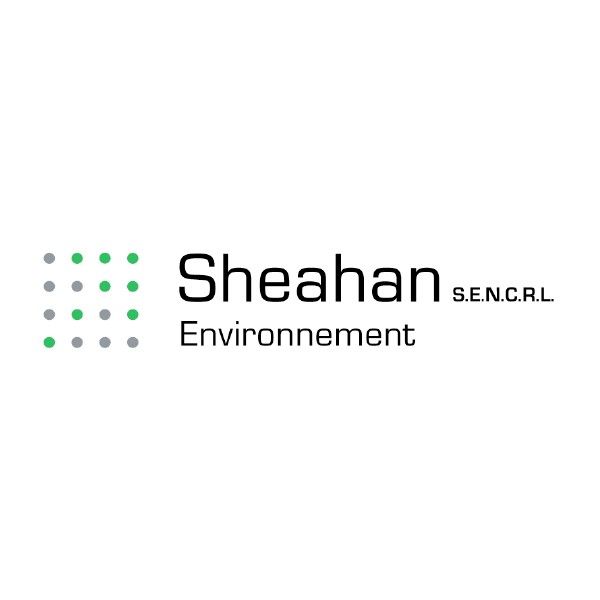
The members of the Nuisance Committee of the Quebec Business Council for the Environment (CPEQ) have taken on the challenge of producing this Good Neighbor Guide. The Guide proposes a series of steps that companies will find useful in maintaining good neighborly relations, a challenge that they will certainly face in the years ahead.
Companies today should be perceived as good corporate citizens. They are aware that it is important to take all the measures at their disposal to minimize and, if possible, eliminate all sources of discontent their activities may cause the public. The fact that they may be found liable for any abnormal nuisance they might cause their neighborhood, has, over the years, made them ever more aware of it.
Companies must also deal with new circumstances that lead them to change their behavior: first, urban sprawl and population movements on the periphery of companies’ sites and secondly, the changes in values that have occurred in the past few decades. These new circumstances have contributed to changing the framework in which companies operate. They are now steadfastly committed to dialogue with the community. This Guide is a tool that will facilitate such dialogue.
In the past, industrial companies used to carry on their activities outside of heavily urbanized zones. Industrial sites were surrounded by low density residential areas, mainly occupied by the companies’ own workforce. In the mid-20th century, however, residential zones inexorably started to draw nearer to industrial zones. Population growth, greater automobile use, land use policies favorable to suburban development, and the tax pressure on municipal finances have all been aggravating factors. They have all contributed, over the years, to the worsening phenomenon of urban sprawl as well as to reducing the distance between residential and industrial zones, thus giving rise to conflicting uses.
Contrary to earlier times, the people currently living in these new residential developments near industrial sites generally do not have a direct employment relationship with the local companies. They are therefore much more demanding towards the neighboring industries and have higher environmental expectations. As a consequence, several industrial projects which, in the past, would have been accepted and even desired by the public are now perceived as unacceptable or have become sources of conflict.
Inevitably these residents, disturbed by noise, odors, dust, lighting and other nuisances usually resulting from living near industrial facilities, have turned to the courts. Their aim has been to compel companies to adopt measures to eliminate or reduce “abnormal” neighborhood nuisances and to potentially obtain monetary damages.
In November 2008, the Supreme Court of Canada rendered a very important judgment on neighborhood disturbances in Quebec. In St. Lawrence Cement v. Barette et al.1, a group of residents of the municipality of Beauport sued a neighboring cement plant for damages over the nuisances they suffered, due to the noise, odors and dust resulting from the cement plant’s activities over a period of several years. The Supreme Court upheld St. Lawrence Cement’s liability, solely on the grounds that it had caused its neighborhood abnormal nuisances. Ever since this judgment was rendered, the member companies of the Quebec Business Council for the Environment (CPEQ) have been very concerned about this issue and have been looking for solutions.
Indeed, from now on, even if a company complies scrupulously with all the environmental legislation governing its activities, possesses all the required authorizations and observes all the conditions stipulated in its authorizations, it could nonetheless be held liable for the “abnormal” nuisances it caused its neighborhood through the normal course of its industrial activities. CPEQ’s members have therefore expressed the wish to obtain practical advice, guidelines or directives on how to interact with their environment in order to maintain good neighborly relations with the nearby communities.
This document is of course, first and foremost, a guide, which does not impose any constraints. In view of the context in which companies currently operate, however, where communities are increasingly mobilized and demanding, the approach proposed by the CPEQ becomes almost unavoidable. Henceforth, no company will be able to disregard its environment while carrying on its activities. Corporate social responsibility involves an everyday commitment to the neighboring communities and, in general, to the stakeholders. Neighborhood rights, as interpreted by the Supreme Court in the St. Lawrence Cement case, are, to some extent, a crystallization of the principle of social responsibility that leads companies to anticipate the threshold of their neighbors’ tolerance in order to manage, and even eliminate, if possible, the nuisances their activities may cause.
Each of the stages proposed in this Guide will result in the production of major documentation within the company, which should be intended for internal purposes and not be distributed externally. It is possible however, that a company should chose to publish part of this documentation. Such a decision will then be made exclusively on its own authority.
Concrete and user-friendly, this Guide presents several practical tools, mainly intended to create and maintain good neighborly relations. All the stages it presents can be integrated into an environmental management system and into the monitoring tools a company already possesses (identification of the aspects, legal and other requirements, monitoring of the controls in place, change management process, training, communication plan, etc.).
The Guide is essentially aimed at existing companies, already established in their community. Companies can also draw inspiration from it when setting up in a new community.
It is appropriate to recognize that a variety of small and medium enterprises exist in Quebec, which have limited means to invest in a complex process. The CPEQ Good Neighbor Guide is intended for all companies, whether large or small. A small or medium-size company may of course choose to apply only certain elements of the proposed approach and integrate others along the way.
The CPEQ makes a detailed tool available to companies, but one should remember that, in this field, the key to success depends on consulting the stakeholders, maintaining a constant dialogue with the community and demonstrating achieved progress.
This Guide presents a series of measures that can be implemented in a company to facilitate good neighborly relations. An internal and external communication strategy is suggested and a targeted and methodical approach is presented to foster involvement in the community and in the municipality. This Guide also proposes a method to follow when a neighborhood tension scenario occurs.
The Good Neighbor Guide contains several examples. All these examples are provided only as indications. It is important to bear in mind that the people responsible, the situations and the sequence of actions may vary according to each company’s circumstances.
This tool is of course, not a guarantee against neighborhood disturbances and tensions or lawsuits and, in this regard, it is always recommended to consult a legal advisor when the time comes to adopt given stances towards the neighborhood.
- 1. St. Lawrence Cement Inc. v. Barrette, 2008 SCC 64 (CanLII), 2008-11-20.















